Some days, you just don’t feel like running.
That’s when it helps to hear a little motivation.
Of course, there are also those times when you probably shouldn’t go for a run. It’s okay to take a day off and let yourself recharge.
But it’s a different story when you’ve already begun running. Unless you’re facing an injury, you’ll usually regret it if you give in and stop.
So, the bad news is that you feel like quitting.
The good news is that I have 12 tips that will help you overcome that temptation and keep running.
How to Keep Running: 12 Tips When the Going Gets ToughTo be clear, I’m not advocating that you try to run through an injury, much less begin a run if you’re already hurt.
“But I can still jog, right?” – Typical Runner
What I am saying is that we all hit those walls every now and then.
When you first start running, you’ll probably hit them all the time.
But even those of us who have been running for years and years sometimes hear the siren call to slow down, stop, and call it a day.
Whether it happens during your next jog or in the middle of a marathon, here's how to keep running even when you really don’t want to.
1. Resist the Temptation to WalkBefore you get the inescapable urge to completely give up, you usually face the temptation to “just walk for a little while.” That voice in your head tells you it’s only a temporary measure. You’ll walk for a bit, maybe get your breath back or wait for the pain to subside, and then you’ll definitely start running again.
Unfortunately, this isn’t what usually happens.
The first reason is that switching to walking can be demoralizing. Even if you are able to start running again, you might still look back on your run as a failure. You didn’t run the entire thing. It didn’t count. Whether or not that’s fair, that feeling can lead to quitting. Why keep going after you’ve given up? Just accept the L and prepare for a W another day.
Why keep going after you’ve given up? Just accept the L and prepare for a W another day.
The second reason is that running gives your body a nice dose of all-natural painkillers:
“When you exercise, your body releases chemicals called endorphins. These endorphins interact with the receptors in your brain that reduce your perception of pain.
Endorphins also trigger a positive feeling in the body, similar to that of morphine.”
Walkers don’t get those.
So, when you decelerate from running to walking, don’t be surprised if those feelings of pain accelerate now that there are fewer endorphins to contend with.
Therefore, the worst thing you can do when you’re tempted to quit running is to actually give in and walk. In fact, I recommend that you make it a habit to regularly ignore that initial impulse. The first time it shows up, dismiss it outright, and keep running.
If you’ve strategically planned walking breaks into your run, that’s completely different, but you still need to fight any temptation to start them early. I’ll talk about this kind of interval training later on.
I’ll talk about this kind of interval training later on.
Once you give in and start walking, it’s going to be difficult to pick up the pace again. Keep running and utilize these other strategies if the temptation returns.
2. Start with Good Form and PostureBefore you even so much as slow down, I want you to check yourself to make sure you’re practicing good running posture.
I’m serious.
While many people love to run because it’s such a natural exercise, the best runners know that the best times belong to those who have the best form. As Meb Keflezighi once said about his winning performance in the Boston Marathon:
“If it wasn’t for form, I don’t think I would have won. I think about my feet, where they’re going to land. My hips, knees, legs, arms, neck. Where my head should be positioned. Where my chin should be going uphill, downhill.”
Even if you don’t have ambitions to someday win a major marathon, form is still important for making the best use of your energy and fighting off pain.
The next time you feel the temptation to quit running, run through this checklist first to make sure your posture is correct:
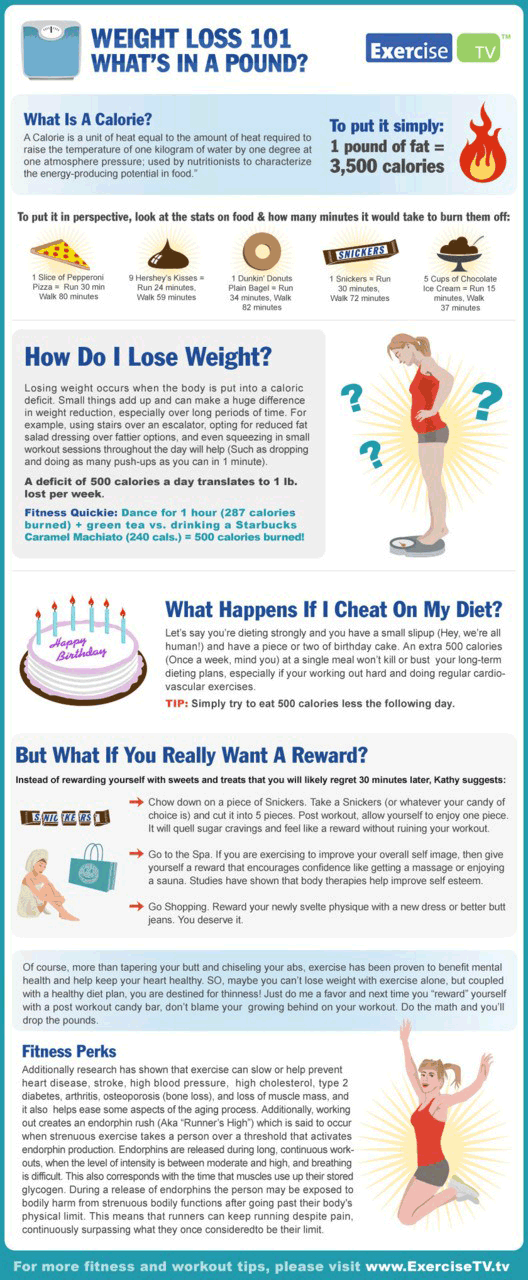 Instead, keep your hands down by your waist and bend your arms at 90-degree angles. This posture may look casual, but it will actually support much longer runs.
Instead, keep your hands down by your waist and bend your arms at 90-degree angles. This posture may look casual, but it will actually support much longer runs.  So, keeping them relaxed during your run is a good way to keep that tension from building up in the first place. This will also make it easier to take nice, deep breaths as you run. If you can’t breathe easily, it’s going to be difficult to keep running. Periodically, check your shoulders. Are they up near your ears? If so, force them down and back by squeezing your shoulder blades together. This will open them up and help them to relax.
So, keeping them relaxed during your run is a good way to keep that tension from building up in the first place. This will also make it easier to take nice, deep breaths as you run. If you can’t breathe easily, it’s going to be difficult to keep running. Periodically, check your shoulders. Are they up near your ears? If so, force them down and back by squeezing your shoulder blades together. This will open them up and help them to relax.  As a result, it quickly starts to feel like they’re doing bicep curls. Their arms ache, but they still try to maintain this “form”, which only makes matters worse. Tension spreads up their shoulders, to their neck, and, well, you know the drill. When you run, move your arms at your shoulders and drive your elbows back before letting them naturally swing forward.
As a result, it quickly starts to feel like they’re doing bicep curls. Their arms ache, but they still try to maintain this “form”, which only makes matters worse. Tension spreads up their shoulders, to their neck, and, well, you know the drill. When you run, move your arms at your shoulders and drive your elbows back before letting them naturally swing forward. Half the battle for runners is to keep your breath in check, so you don’t tire out or cause yourself the infamous side stitch. While picking the right cadence is important – more on that in a moment – the best you can do to keep your body relaxed and breathing easily is to maintain good posture. It will be much easier to keep running if you do.
You may have noticed that I mentioned breathing six times in that last section, even though it was about form.
That’s because the better you’re able to manage your breath, the better able you’ll be to manage pain when you’re running.
And while good posture will definitely help with your breathing, you can do even more to ensure your body is getting plenty of oxygen while you run.
Simply put, always breathe through your nose and out your mouth.
I know it’s easy to rely solely on breathing through your mouth, especially as you begin to tire, but it will actually do more harm than good and virtually guarantees you’ll struggle:
“Hyperventilation through the mouth, i.e. the quick and hard breaths through the mouth that so many of us take when exercising at high intensity or feeling stressed, causes the body to offload more CO2, making it harder to oxygenate our cells.”
At first, it can be difficult to never breathe in through your mouth when you run, but it’s worth practicing. If you have to slow down your pace to do so, it’s worth it. You can work your way back to your normal cadence (the Run/Walk Method in section 9 will also help with this).
If you have to slow down your pace to do so, it’s worth it. You can work your way back to your normal cadence (the Run/Walk Method in section 9 will also help with this).
Within just a few weeks of consistently practicing like this, your lungs will actually expand your blood vessels, which increase your ventilatory threshold.
Ideally, you want to work up to the point that you can breathe in for two steps and then breathe out for two (the “2:2 pattern”). This will give your muscles plenty of oxygen and it’s an easy way to keep your breathing on pace.
Just like with form, if you find yourself aching while you run, check your breathing. Chances are you’re not practicing the 2:2 pattern. Slow down a bit, get your breath back on track, and then keep running.
4. Distract YourselfI think distractions get a bad name.
Sure, they’re not all great. I’ve definitely spent more time than I’d like to admit watching documentaries on Netflix (the titles of which I’ll never admit).
But distractions can be fantastic when you start rethinking whether or not you want to keep running.
That’s when it helps to focus on something other than that growing urge to call it quits.
For many people, the simplest way to do this is by drawing attention to the song playing through their earbuds. You might even mix it up with a new song you haven’t heard in a while, as that might have an easier time winning over your focus.
Audiobooks can be great for this, too. Unless you’re listening to the same one for the second time, you’re never quite sure what’s going to happen next. So, pick an interesting book and you’ll always have a distraction ready when the going gets tough. If you don’t already have an Audible account, I highly recommend it.
Podcasts are great for the same reason. Start an episode you haven’t heard before and direct your attention there.
Another simple distraction is using a metronome for your runs. Not only will it give you something to focus on, but it will put that focus on your actual steps. This will make it easier to maintain your running cadence, so you don’t just keep running, you keep running at your ideal pace.
This will make it easier to maintain your running cadence, so you don’t just keep running, you keep running at your ideal pace.
Before your next run, think of some distractions you can turn to if you think about ending things early. Whether it’s a different type of song, a book, a podcast, or just turning a metronome, have those distractions ready for when you need them.
5. Or Just Bribe YourselfI think bribes get a bad name, too.
Okay, no. Bribes are bad, but if there was one time when it was maybe okay to use a little bit of a bribe, I’d say it’s when that voice in your head tells it’s time to quit running early.
For example, I know some runners who will give themselves a cheat meal or allow themselves dessert if they push through the discomfort and keep on running. Maybe for you, it would be an extra episode of that show you like or sleeping in a bit the next morning. Maybe it would be a guiltless happy hour or brunch with friends.
Some runners prefer to reward themselves but only after they’ve reached a certain milestone. Maybe it’s running a certain number of miles a day for five days. It could be running a total of 100 miles in a month without any walking.
Whatever the case, the outcome is the same. When the temptation to throw in the towel shows up, it helps to have another, bigger, better temptation to keep you running.
6. Focus on the Reason You're RunningHopefully, you’re not just running to make room for dessert or justify another glass of cabernet.
Don’t get me wrong.
Those things are great.
But is there a greater purpose that gets you to put your running shoes on?
Is there a goal you’re chasing whenever you run?
I know many of you are running to train for a 5k, half-marathon, marathon, or some other event. Even if it’s not your first, those are still impressive goals. Think about how important it is to keep running so you show up ready on race day capable of recording your best time.
Many people take up running for health reasons. Maybe you’re trying to lose weight or want to improve your cardio so you can take on other activities.
If you’re a parent, a big part of running might be setting a good example for your kids. It could just be so you’re able to keep up with them.
Of course, there’s nothing wrong with running simply because you like it. If it makes you happy, that’s reason enough. But if you’re noticing that your fun is being cut short because you’re unable to push through discomfort, it will help if you can think of a bigger goal.
Is this the year you finally decide to sign up for a race?
Is there a number you’d love to see from your scale?
Brainstorm some ideas and come up with a goal that can pull you away from the temptation to quit running.
7. Give Yourself a Target DestinationIt turns out that there’s a really simple trick you can play on your mind that will help you keep running even if you feel like you’re about to give up.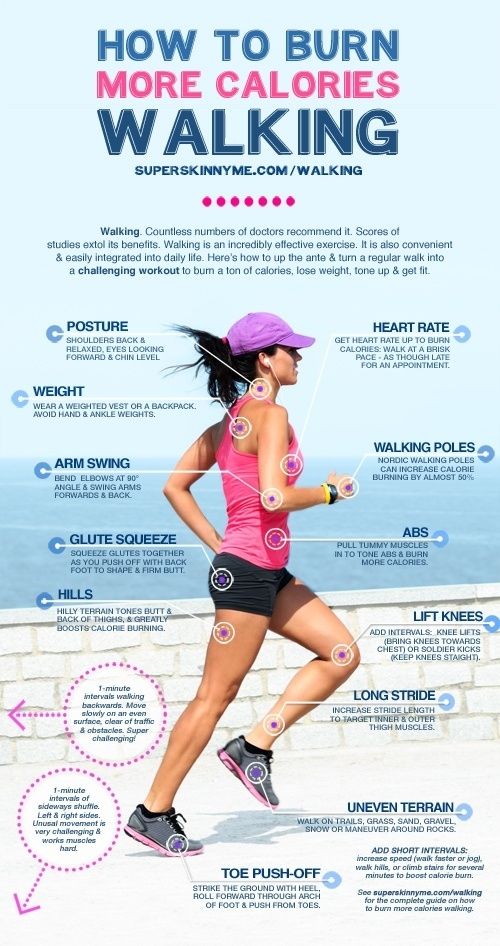
This cool trick is known as “attention narrowing” and is extremely helpful for runners, as The Atlantic pointed out in an article titled, Running Faster by Focusing on the Finish Line:
“But new research suggests that taking the "eyes on the prize" mantra literally can help with performance. A study published in the journal Motivation and Emotion found that focusing on a stopping point in the distance, like a building or tree, can cause distances to appear shorter. This, in turn, encourages exercisers to move more quickly and reduces the feeling of exertion.”
This is pretty amazing when you think about it.
Attention narrowing won’t just help you get through a rough spot by making it feel like time is passing faster. It will actually help you run faster, too.
The next time you feel like stopping, keep calm. Find an object out ahead of you and focus on trying to get there. By using an actual destination as your distraction, you’ll realize two benefits and avoid the ultimate negative: giving up.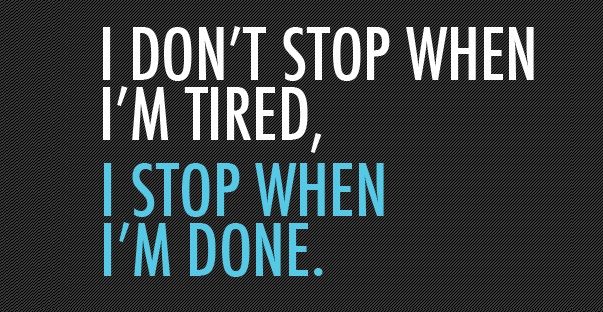
Obviously, this works best when you’re running in an actual race. While I suppose you could do it on your local running trail, trying to race unsuspecting runners will probably earn you a bad reputation.
If you’ve ever run a race before, you know that one of the most important steps – at least, figuratively – is maintaining your cadence. It’s easy to get excited and let your adrenaline take over. Unfortunately, that’s how you end up gassing out before you’re even halfway done.
As we just learned, focus can also be a powerful weapon against fatigue. You can use it to distract yourself or to pick physical landmarks to focus your mind on while your body keeps pushing forward.
Another option that’s a bit more exciting is to find a fellow runner to compete against.
While most marathon runners compete against their own best times, it can help to find a runner up ahead whom you can catch up to and overtake.
Now, you have to be careful with this strategy.
It’s only supposed to be a temporary solution for overcoming aches, pains, and exhaustion. If you just keep trying to race people for an entire marathon, you’re either going to win (great!) or struggle to finish (not great).
Wait until you need some extra motivation and you have a better idea of the field of runners around you. Focus on one who’s been keeping about the same pace and then take your attention off discomfort and put it on overtaking them.
Once you do, slow back down to your normal cadence and collect yourself. Repeat as necessary.
9. Give Yourself a "Walking Budget"Look, we all have bad running days.
Whether you get a side stitch, pull a muscle, struggle with tension in your upper body, or are just running low on motivation, it’s okay to admit – every now and then – that you’re not going to finish your run without some walking.
In that case, one idea is to give yourself a “walking budget.”
As I mentioned earlier, once you quit running to start walking, it’s hard to reverse course. Your body will naturally prefer to stick with the more relaxed, less-demanding pace of walking.
Your body will naturally prefer to stick with the more relaxed, less-demanding pace of walking.
One way to get over this is to give yourself a “walking budget” of only a certain number of steps. It could be 50 or even 100.
The point is that you tell yourself, “Alright, I’m going to walk for 100 steps, but then I have to start running again.”
Keep in mind, you can take as long as you want to walk your allotment. You might decide to slow your cadence considerably to help catch your breath, get over your side stitch, etc..
That’s fine.
You just can’t go over budget.
Once you’re out of walking steps, it’s time to switch back to running steps.
A similar idea is to give yourself a timed break. You might tell yourself you’ll rest for a minute before running again.
I prefer the walking budget, though, as it keeps you moving. This makes it easier for your heart and lungs to ramp back up again, but it’s especially beneficial if your muscles are likely to cramp up once their demanding work is over.
Start with a walking budget of 100 steps the next time you feel like quitting and see if that quick break doesn’t help you get back to running.
10. Switch to Intervals of Running and WalkingIf you find yourself regularly depending on your walking budget to get through your runs, it might be that your endurance isn’t quite where it needs to be – yet – to tackle the kinds of mileage you want to cover.
There’s absolutely nothing wrong with that.
We have all been there.
Some of us, multiple times.
One easy way to address this challenge is through the Run/Walk Method. This is when you switch between intervals of walking and running at preplanned times in order to finish.
For example, you might run for five minutes and then walk for five minutes. If that becomes manageable for you, you could switch to running for five minutes and then walking for only four. In this way, you’ll build up your endurance without having to fight through the kinds of physical discomfort that would come from trying to run 100% of the time.
I like this approach because it gives you the rest you need to continue running, but it’s preplanned when you’ll downshift into walking. You’re not just doing it on a whim and building the bad habit of giving in when it gets tough.
Also, many experienced runners still occasionally use the Run/Walk Method to help boost their times. They’ll push themselves past their normal speed before switching to walking to rest a bit before doing it again.
So, how you keep running through the pain may eventually be how you beat times you never thought possible.
11. Come Up with an If/Then PlanOnce you’ve been running long enough, you start to get very familiar with the kinds of aches, pains, and even thoughts that can show up to slow you down.
Again, there are those absolutely awful side stitches.
You might have an old sports injury that nags you.
Most of us eventually have the thought, “I just can’t do this.”
Whatever your specific physical and mental obstacles may look like, I recommend that you write them down now or at least before your next run.
If you don’t already have one, I’d also recommend you try a runner’s journal for jotting down these kinds of important notes.
Write them down as an If-Then Plan before you go out on your next run. Put a plan together for how you’ll address each one if they happen.
For example, yours might look like this:
I think one of the biggest challenges for most runners when they start noticing those initial aches and pains is that they don’t have one of these plans in place. They know they don’t want to stop, but they have to consider their options while they’re still running and still feeling that pain.
Knowing you have a plan in place for your most common obstacles will give you peace-of-mind and make it much easier to adjust on the fly and salvage your run.
12. Change Your Plans (But Don’t Quit)Finally, it’s okay if you realize that your normal run was actually a bit ambitious.
It could just be temporary.
If you’re coming off an injury, haven’t run for a while, or aren’t getting enough rest, it might be a while until you’re able to run as long as you want without having to stop along the way.
While I know the other 11 strategies on this list will help you power through the pain and keep running when you think you want to stop, sometimes, the best thing you can do is step back and reconsider your normal runs.
Either reevaluate what kind of time you’re shooting for or cut back on the distance a bit. Get back to runs you can enjoy and build from there using the other strategies you’ve learned.
But don’t quit.
Never quit.
Marcus Aurelius said, “The impediment to action advances action. What stands in the way becomes the way.”
Now, I have no idea if Mr. Aurelius was a good runner or not.
But I think his advice certainly applies to anyone who needs help learning how to keep running when they regularly don't want to.
If it happens again and again, use it as an opportunity to become a stronger runner.
Fix your posture.
Learn to breathe better.
Find a destination to run toward.
Whatever you need to do, start planning to do it now. Put together your If-Then strategy, find your running shoes (or try barefoot running), and, most importantly, enjoy yourself.
The struggle to keep my running motivation going has never been more real than as a Mother Runner. When racing in high school, my father (once a Marine, always a Marine) would shout a familiar Marine Corps running motivation mantra—“Pain is temporary! Pride is forever!” It helped me to keep moving then. But now as a Mother Runner pulled in many directions, I’m often exhausted before I even put on my running shoes.
When racing in high school, my father (once a Marine, always a Marine) would shout a familiar Marine Corps running motivation mantra—“Pain is temporary! Pride is forever!” It helped me to keep moving then. But now as a Mother Runner pulled in many directions, I’m often exhausted before I even put on my running shoes.
I need to up my mental game. I’m not alone. Thankfully, many Mother Runners have found self-talk and Jedi mind tricks to help them push through tough races and workouts. It’s no wonder they work. Stuart Smalley was onto something when he told himself repeatedly, “I am smart enough. Good enough. And doggone it! People like me!” A small study found that cyclists who used positive self-talk lasted 18 percent longer than those who didn’t.
Here are the best tricks that us mamas use to keep on keepin’ on:
It’s the last thing many of us would think of doing but acting a little weird when we want to quit can be quite the motivator and distraction. Erica, a sub 3-hour marathoner Mother Runner, admits she acts “nutty” when she’s hurting during a race. She yells and gestures to the crowd to get them pumped. She feeds off their energy. And, it reminds her why she’s there—for fun and friendship.
Erica, a sub 3-hour marathoner Mother Runner, admits she acts “nutty” when she’s hurting during a race. She yells and gestures to the crowd to get them pumped. She feeds off their energy. And, it reminds her why she’s there—for fun and friendship.
If there is a resounding answer from Mother Runners to what works when trying to push through—it’s breaking up what lies ahead. This can be as much as the last 10k in the marathon or as little as the next beep on your watch. Tell yourself you can do it and just focus on that next bit. Take it one step (or watch beep) at a time.
Think of others.Olympic Trials qualifier Gina thinks of someone in her life who’s struggled and persevered. For her, that’s her dad who can’t run anymore because of a stroke. She runs for him. And, she runs for her three girls who are waiting for her at home or the finish line. She tells herself to finish strong for them.
Related: How this mother runner ran through chemotherapy
Think back.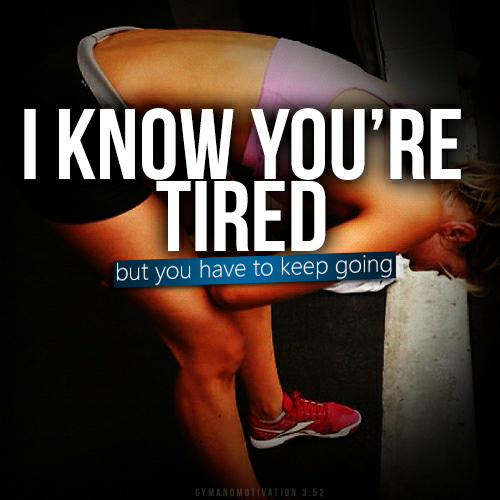
When the going gets tough in a race, I think about all the hard work I put in for this moment—the track workouts, the early mornings, training in the elements, dietary changes. The hay is already in the barn. I just need to dig in to get it.
Find a running motivation mantra.Pick one phrase that pumps you up or reassures you. It could be as simple as “You’re doing great,” “You’re strong,” or “Run relaxed,” zone out and repeat it over and over. I also like to pick a lyric from a song. Lately, it’s been from The Strokes’ Reptilia, “please don’t slow me down if I’m going too fast.” Take your eyes off your watch and stop obsessing oversplits. Instead, repeat this rhythmic mantra and let your body do its thing. (Get a list of awesome mantras here.)
Explore your virtual reality.Whether racing or in a workout, visualize your race finish. How great will you feel to be done with the race and the training? How rewarding will your accomplishment be? Who is there cheering for you? Or take it to the extreme and think of anyone you ever cared about being there and witnessing your success and commitment.
Related: How this mom mastered self-talk to qualify for the Olympic Trials Marathon.
Practice self-compassion.Rebecca, a health and wellness coach and sub 3-hour marathoner, reminds herself to give herself grace. “Life is stressful, busy and I’m tired sometimes! Our bodies notice,” she says. “So, when a workout isn’t going the way I’d hoped, I put forth what I have that day, finish the workout and know the effort is better than not doing the workout at all. I try to remember one workout (or race) does not make or break anything, so there will always be another one to push if it just isn’t happening.”
The other day I had my first workout of the year in the heat. It was tough, I wanted to quit. I fixated my eyes ahead, off my watch, and told myself that I was strong, fast, and tough—and the quicker I ran, the sooner I’d be done. It worked.
by Whitney
We divided these runners into three groups - each has its own points of internal resistance, forcing them to hang their sneakers on a nail. And for each such group, we gave strong reasons not to put off the run until better times and stay in the run longer.
And for each such group, we gave strong reasons not to put off the run until better times and stay in the run longer.
Read: maybe this is about you?
They run from five days to a year. They quickly get inspired, actively train almost every day, buy a new running uniform and disappear after a couple of months. The most common reasons are: laziness, injury, switching to another physical activity, too much work, illness, bad weather, “running is not my thing.”
Return points:
Good target. Illusions such as losing weight by the summer, running for a company or preparing for a 10-kilometer run from scratch in two weeks - are shattered on the rocks of common sense.
Responsibility for oneself. It happens that you don't want anything. Now there is an unreliable minimum, which may end. And you seem to understand everything, but you have neither the strength nor the desire to change anything. The fear of starting paralyzes the body and life.
Now there is an unreliable minimum, which may end. And you seem to understand everything, but you have neither the strength nor the desire to change anything. The fear of starting paralyzes the body and life.
Therefore, running can become an excellent meditation and a big step towards yourself. From those who do not strive for anything, and bribes are smooth. And it's pretty hard to screw up on the run.
Regularity. You don't need to run every day, but for a visible result, it would be nice to start with three times a week.
Running friends. Determination to run can be seriously shaken in the absence of support from family and friends. If you failed to enlist their support, feel free to go to a running club (here is a link for Kiev residents) or look for company in running groups (for example, "Running for All"). There are a lot of newcomers, a great atmosphere and unrealistic support for your endeavors.
Coach's advice: When you see your first running successes, you want to move mountains and run not five planned kilometers, but three times more at once.
However, any load should be gradual.
They run for half a year or a year, they ran a half or a marathon. Often and with pleasure they go on running tours, support challenges and generally run regularly.
Causes of apathy can be injuries, poor results at the first serious start, lack of visible progress, personal dramas, illness or fatigue from the “competitive pace”, lack of new goals.
Return points:
Registration for the Dream Run. Want to meet Gordon Ramsay or Natalie Dormer in sexy leotards? Or maybe you, running in a drizzling rain, imagined that it was a sea breeze?
For many runners, marathons are the perfect excuse to go where they have long wanted to go. After all, there is nothing more pleasant than running along the most picturesque streets of the city without the risk of getting hit by a car and feeling that you are welcome here.
Change of scenery. Running, like your favorite song on repeat for weeks, can get boring.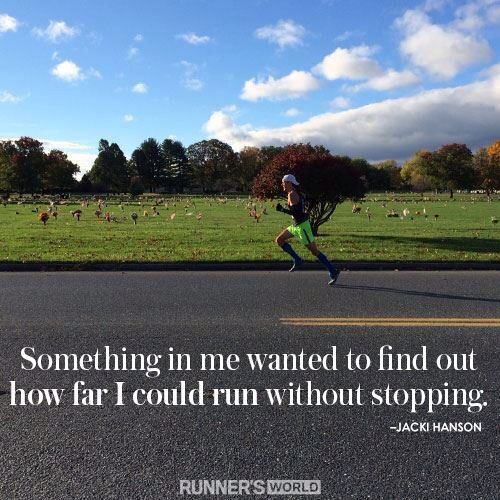 Satiation occurs when it gradually ousts many other amenities from your life, the value of which you understand only in their absence. In the intense rhythm of training, it is important to listen to yourself and keep a healthy balance without a total bias towards running.
Satiation occurs when it gradually ousts many other amenities from your life, the value of which you understand only in their absence. In the intense rhythm of training, it is important to listen to yourself and keep a healthy balance without a total bias towards running.
Hamster in the mirror. Who runs well, eats well. Running training and an active lifestyle allow you to sometimes sin delicious without consequences for the figure.
When we stop running, the habit of eating well does not disappear. If there are fewer angles in the photo in which you are good at it, it's time to return to the sport.
Reboot. Sometimes, while preparing for a marathon, you suddenly realize that you hate 25-kilometer crosses. Or, by running sprints, you discover a love for long distances.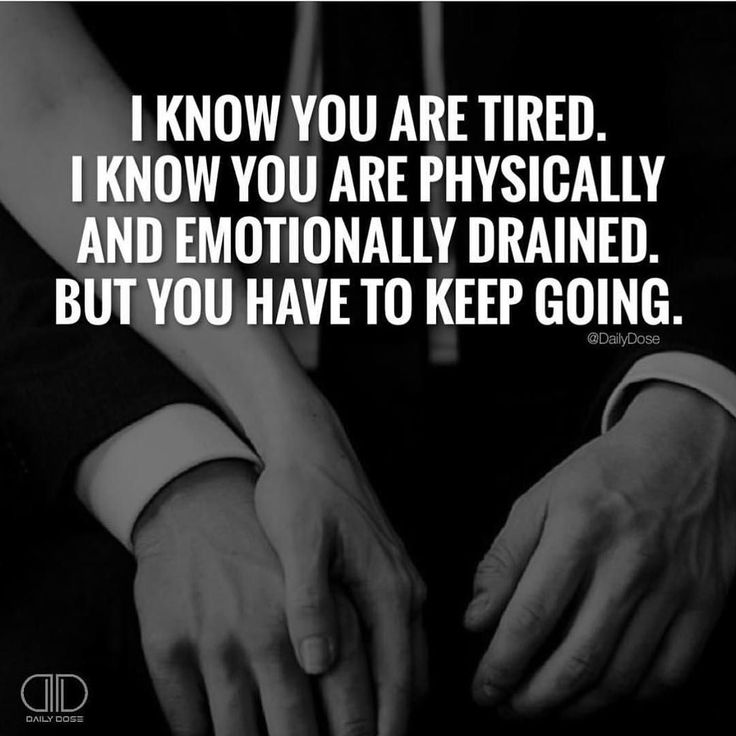
Competitive pressure often makes it difficult to admit the obvious to oneself. In the case when dislike for distance has nothing to do with fear, it is better to consult a trainer and choose the best type of training. It's okay not to want to run a marathon. It is not normal to hold on to other people's goals as if they were your own.
Trainer's comment: often experienced fatigue is the cause of apathy. It can be physical and psychological, but in any case, you need a quality long rest, a change in activity or sport, and sometimes the complete elimination of running activity.
Running changes the quality of life and changes the worldview in terms of health and energy. Two to three weeks without sports, stress at work and at home will help restore motivation and desire to train.
They have been running for more than five years: people with permanently taped nipples, hundreds of trails behind them, a huge number of marathons, ultramarathons and at least one Ironman. Many of them ran a marathon of three hours and went to a triathlon for new sensations. To remove twenty seconds from the lichnik is a reason for tears of joy.
Many of them ran a marathon of three hours and went to a triathlon for new sensations. To remove twenty seconds from the lichnik is a reason for tears of joy.
Causes of apathy: existential questions of human existence, reaching the limit in results and lack of clear progress, personal dramas.
Return points:
To be an example. Take a look around - you may be the one who inspired half the office to run. And when there are children, the motivation to become a great personal example triples. A handsome and fit marathon parent is more exciting than any career achievement.
Local starts. If you are not a star Kenyan, then it will be almost impossible to win some famous marathon. But the path to the podium often lies through small local races, which many runners ignore in pursuit of prestigious races.
 In Ukraine and Russia, competitions are held for this distance, practice on them.
In Ukraine and Russia, competitions are held for this distance, practice on them. Forever Young. People routinely err on the lower side when trying to guess your age. The habits of healthy sleep, food and self-organization that have been developed over the years not only benefit you, but also the family. No childhood obesity and computer addiction, but frequent trips with the whole family and excellent support from relatives at the starts.
Learn and learn. Having been running for many years, you definitely have something to tell beginners. A healthy complexion that contrasts with the earthy color of office workers, a toned body and a good mood makes people suspect you are a coach and seek advice on healthy lifestyles.
Runners love everything new and enjoy going to the pros to learn, buy medal hangers and nice running clothes. Often, those who have been running for a long time find amazing insights and embody them, making the life of runners easier and more enjoyable. You never know where your love of running will take you.
You never know where your love of running will take you.
Trainer's comment: The main thing is diversity in means, types and places of training. Constant creativity is needed, because habitual workouts no longer produce any physiological changes. Look for yourself and pass on your experience and knowledge to beginners. Giving people joy and filling them with health is wonderful.
Running is the journey from bravery at the beginning of the race to true self-confidence at the finish line. Do not change these emotions for procrastination.
What helps you go for a run?
"I'm tired - I'll go running." Is it always a good idea?
Is running a drug? How to know if you have a running addiction
Stop cannot continue: when DNF is the best choice
Nogibogi is a crowdfunding project created to promote running. And this post became possible thanks to our patrons: Daria Kruteniuk, V4, Maxim Kuzmich, Oksana Rybakova . Thank you so much!
And this post became possible thanks to our patrons: Daria Kruteniuk, V4, Maxim Kuzmich, Oksana Rybakova . Thank you so much!
Although today the term "burnout" is used more in a humorous context as an excuse for one's own laziness, in fact, this is a serious problem that cannot be ignored.
Burnout is a consequence of long-term or chronic stress, as well as physical and mental overload, resulting in a state of bodily and emotional exhaustion.
Burnout is often used to describe feelings about work, hobbies, sports, relationships, and more. The more often and longer you perform any activity, the more likely it is that you will eventually experience burnout.
It can be very difficult to accept the fact that we are burnt out. We are proud that we can continue to run in the crazy rhythm of life, despite stress, lack of sleep, deadlines and fatigue. Therefore, many runners, not being able to recognize in time that “something went wrong”, experience severe emotional burnout and continue to run, increasing the load, thereby worsening their condition even more.
There are three types of burnout, runners can experience several of them at the same time:
If you've been feeling tired, lethargic, unproductive, or dissatisfied with your training lately, you may have overtrained. Overtraining is a condition that is bound to follow if runners actively fight burnout by running longer and harder.
Overtraining is a condition that is bound to follow if runners actively fight burnout by running longer and harder.
It should be noted that recreational runners are more likely to experience burnout than classic overtraining.
If you don't know why you stopped experiencing the joy and pleasure of running, you may just be burnt out. Here are the main signs to look out for.
Lack of motivation and desire to run
If you suddenly lose your motivation to run but don't know why, running burnout may be the cause. Of course, this can also happen due to more specific events, for example, you are really very busy at work and have little rest, or it is the off-season and the weather is not conducive to being outside for a long time, or you do not have a training goal, but an important and desirable race once again cancelled.
But if everything is relatively fine with you, there are several registrations for competitions, and running is not pulling at the same time, it is quite possible that you are experiencing burnout.
Feeling tired and lethargic on every run
Often runners mistake fatigue for laziness and begin to stretch their workouts on "moral-volitional". It's normal to feel overwhelmed after an intense tempo or a long one in difficult conditions, but if you take a day, two or even three to recover and still feel tired and in pain that almost never goes away - you have a problem.
Your progress has stalled
There is nothing more frustrating than training more and better only to find that your progress is steadily slowing down. Sometimes progress plateaus because you're putting in too much effort, your body is just too tired to keep going. If you find that you're no longer improving your performance, whether it's speed training, competition, or the overall feel of your run, you're probably experiencing burnout.
Changes in habitual eating and sleeping patterns
You sleep poorly - unable to fall asleep at your usual bedtime, have difficulty waking up on time, wake up in the middle of the night or early in the morning and cannot fall asleep; or vice versa - you experience constant drowsiness, even if you slept well the night before. The relationship with food is like a swing, from complete loss of appetite to occasional overeating.
The predominance of negative emotions
Burnout, unfortunately, also affects the emotional sphere - such states as anger, depression, helplessness, mood swings, excessive emotional sensitivity and susceptibility, disappointment and irritation predominate. So, if everything around you infuriates and irritates - this is not a bad character, this is a marker of burnout.
The symptoms of burnout are very similar to those of overtraining, the only difference is how long it takes you to recover. If burnout can be dealt with in a few weeks, then in case of overtraining, the bill will go to months.
This does not mean that burnout should not be taken seriously, on the contrary, at the first signs it is better to take measures in order to quickly regain the joy of life and sports.
Take a break
Take a break for at least a week, or more. Understand that this feeling of constant sluggishness is not due to laziness and, if left as is, the next stage can be trauma.
Give your body time to rest without feeling guilty. It's likely that after a week or two without running, your body will want to move again. Start slowly and gradually, increase your mileage over several weeks. If the pain returns, reduce the mileage again.
Skipping a few days or weeks of training will help you recover mentally and physically, while returning too quickly can result in missing several months.
Rule out physical problems
The first place to start is to check your ferritin levels to rule out iron deficiency anemia, a condition defined as a deficiency of hemoglobin in the blood and a notorious cause of tired and fatigued runners.
When an athlete is iron deficient, every run can feel tiring. A general rule of thumb is that female runners should have a minimum ferritin level of 30 ng/mL and a minimum of 40 ng/mL for male runners.
If the indicator is normal, and you are experiencing all the symptoms of chronic fatigue, it is worth taking other tests to rule out overtraining.
Take care of your body and mind
Quality sleep (7 hours minimum, 8-9 hours is better)), proper nutrition with foods saturated with all the necessary vitamins, minerals and amino acids, plus adherence to a hydration regimen will help the body recover.
Think and find for yourself those types of relaxation that bring pleasure to your body - for example, massage, sauna, breathing exercises, outdoor walks, etc. do not overload yourself with negative news, try to delegate part of the household routine and daily duties.
Reassess your running goals
Whether you're nearing burnout or already trying to beat it, it's time to reevaluate your running goals. The current state of the plateau hints that something in your training plan is not working. Your body no longer responds to the workouts you've been doing.
The current state of the plateau hints that something in your training plan is not working. Your body no longer responds to the workouts you've been doing.
You may be running more miles than your current lifestyle allows and failing to recover. The balance between running and life requires reasonable expectations and an end to being too hard on yourself. At this point, try to forego personal training, but focus on why you started running and what you enjoy about it.
Be honest with yourself and don't go all out on every run. In the recovery phase, end your workout when you feel like you can run a couple more miles on a long run or a few more intervals at a given pace.
Add variety to your workouts
Sometimes burnout is caused by the monotony and monotony of your workouts: the same route, exhausting marathon training plan, the same types of training for weeks without a hint of something new.
In this case, introducing elements of novelty will help you fall in love with running again: if you are used to running alone, try to find a partner or even several; if you train in silence, take some music or an interesting podcast with you, and vice versa, try leaving your headphones at home and listening to the sounds of nature.